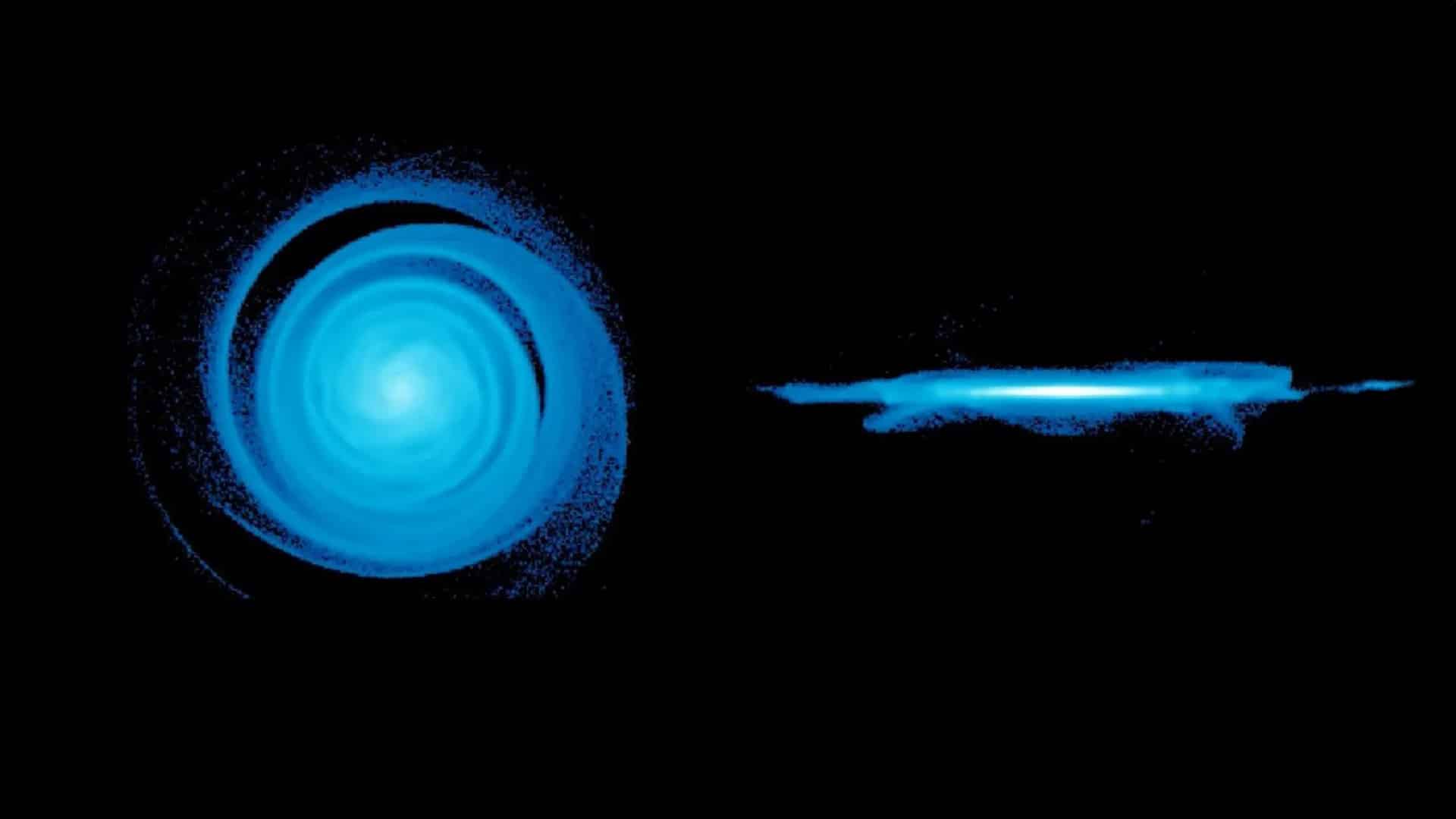A team of astronomers has captured a new snapshot of an ancient galaxy, BRI 1335-0417, which is over 12 billion years old and the furthest known spiral galaxy in the Universe. The study, published in Monthly Notices of the Royal Astronomical Society, reveals crucial information about the formation of this galaxy and the origins of our own Milky Way.
The researchers used a state-of-the-art telescope called the Atacama Large Millimeter/Submillimeter Array (ALMA) to capture a detailed view of the galaxy’s disk, a flattened mass of rotating stars, gas, and dust. They were particularly interested in how gas was moving into and throughout the galaxy, as it is a key ingredient for forming stars.
The new data not only allowed the researchers to observe the motion of gas around BRI 1335-0417 but also revealed a first-ever seismic wave forming in this type of early galaxy. The galaxy’s disk moves in a way similar to ripples spreading on a pond after a stone is thrown in. This discovery means we now know more about how the galaxy was formed.
Lead author Dr Takafumi Tsukui said, “The vertically oscillating motion of the disk is due to an external source, either from new gas streaming into the galaxy or by coming into contact with other smaller galaxies. Both possibilities would bombard the galaxy with new fuel for star formation.”
The study also revealed a bar-like structure in the disk, the most distant known structure of this kind. Galactic bars can disrupt gas and transport it toward the galaxy’s center. This new data shows the dynamic growth of a young galaxy.
Associate Professor Emily Wisnioski, the co-author of the study, said, “Spiral structures are rare in the early Universe, and exactly how they form also remains unknown. This study also gives us crucial information on the most likely scenarios.”
The ALMA observatory, part of the European Southern Observatory (ESO), played a pivotal role in the study. The observatory has 66 antennas, which observe a single galaxy in unison. The data from each antenna is combined to create a single image of the galaxy using a supercomputer.
Because BRI 1335-0417 is so far away, its light takes longer to reach Earth. The images we see through a telescope in the present day are a throwback to the galaxy’s early days when the Universe was just 10 percent of its current age.
This study is an important step toward understanding the formation of early galaxies and their role in the evolution of the Universe. While observing the galaxy’s evolution directly is impossible, as our observations only give us a snapshot, computer simulations can help piece the story together.
Journal Reference
- Tsukui, T., Wisnioski, E., Mai, Y., Iguchi, S., Baba, J., & Freeman, K. (2023). Detecting a disc bending wave in a barred-spiral galaxy at redshift 4.4. Monthly Notices of the Royal Astronomical Society, 527(3), 8941-8949. DOI: 10.1093/mnras/stad3588

Shambhu Kumar is a science communicator, making complex scientific topics accessible to all. His articles explore breakthroughs in various scientific disciplines, from space exploration to cutting-edge research.


